Logic Supply Core-ML320 Fanless Industrial NUC Review
by Ganesh T S on April 30, 2014 3:45 PM EST- Posted in
- NUC
- Industrial PC
- Passive Cooling
- Logic Supply
Performance Metrics - I
The Core-ML320 was evaluated using our standard test suite for low power desktops / industrial PCs. We have recently revamped our benchmark suite and the new tests couldn't be run on loaner samples. Therefore, the list of PCs in each graph might not be the same.
Futuremark PCMark 8
This is one of the new tests in our test suite. PCMark 8 provides various usage scenarios (home, creative and work) and offers ways to benchmark both baseline (CPU-only) as well as OpenCL accelerated (CPU + GPU) performance. We benchmarked select PCs for the OpenCL accelerated performance in all three usage scenarios.
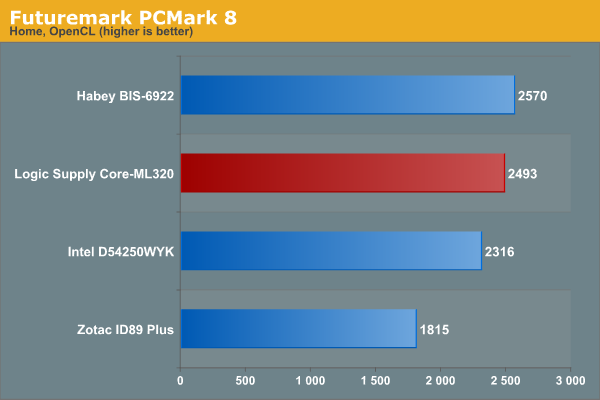
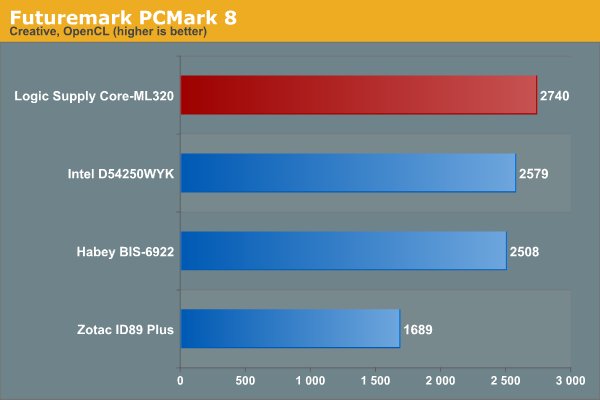
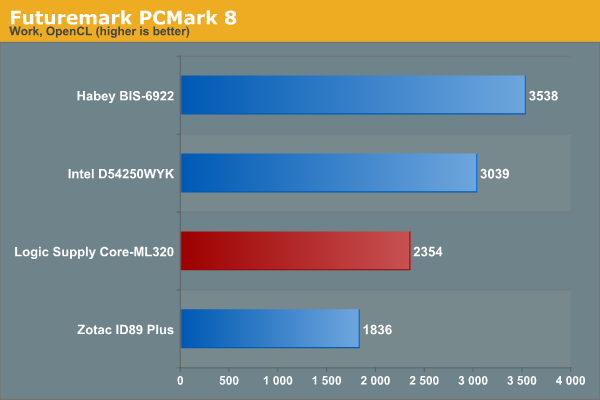
Miscellaneous Futuremark Benchmarks
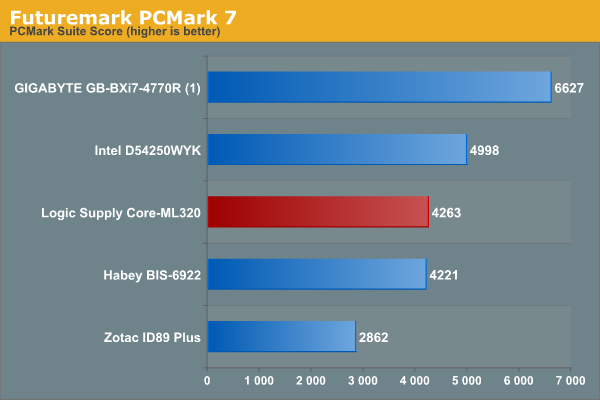
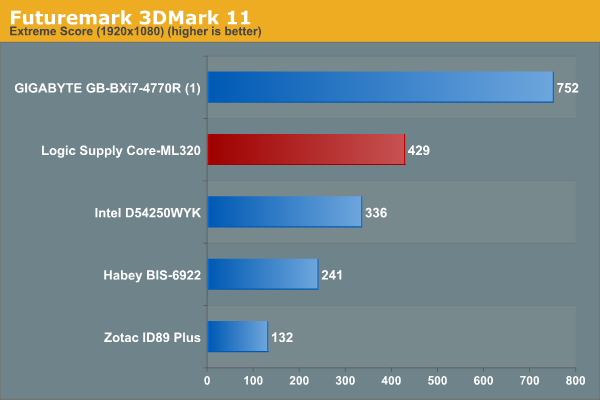
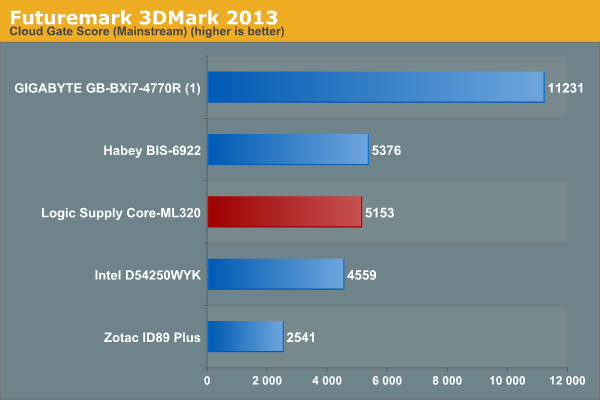
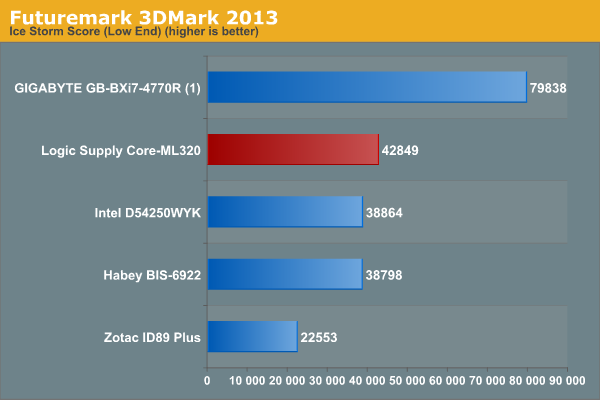
3D Rendering - CINEBENCH R15
We have moved on from R11.5 to R15 for 3D rendering evaluation. CINEBENCH R15 provides three benchmark modes - OpenGL, single threaded and multi-threaded. Evaluation of select PCs in all three modes provided us the following results.
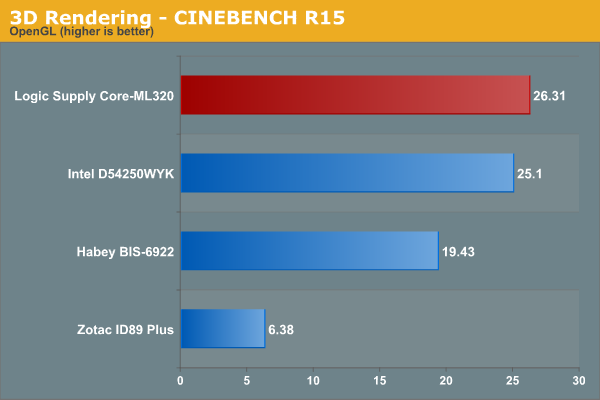
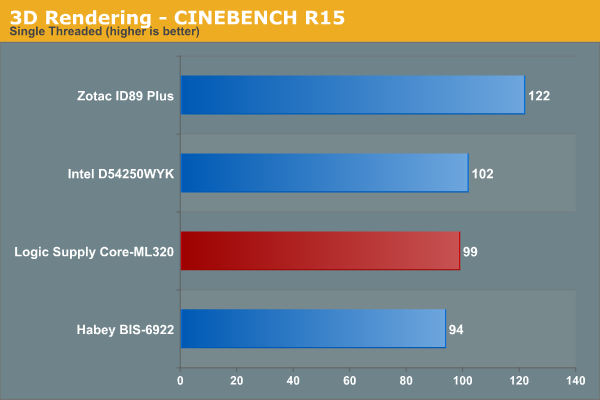
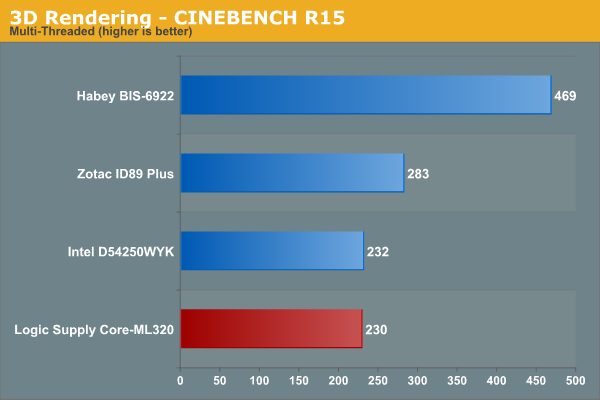










31 Comments
View All Comments
jcknows0 - Wednesday, April 30, 2014 - link
The chassis itself is a little on the pricey side. Its pretty hard to recommend a $1300 i5 system with less than 100 GB SSD space. I just built my latest NUC for under $300, just doesn't seem worth it for fanless.faiakes - Wednesday, April 30, 2014 - link
For Europeans, there is the very similar Alaska Tesla H. High-tech reviewed it and compared it to the Intel and another custom case herehttp://www.bit-tech.net/hardware/cases/2014/03/20/...WithoutWeakness - Wednesday, April 30, 2014 - link
The target market for these types of fanless, industrial, SFF machines is not the same target market as Intel's off-the-shelf NUC or Gigabyte's Brix. Fanless boxes like these are meant to be deployed in areas where the machine likely needs to be running 24/7/365 and any downtime is an order of magnitude more costly than the $1300 that the box costs. Overheating due to fan failures, untimely deaths of non-enterprise-grade SSD's (or, god forbid, platter-based hard drives), and other potential issues can be avoided by getting something like this box that is built specifically for the application. For other uses a NUC makes more sense (I bought a NUC to run as a cheap all-purpose media/backup/Mumble server and I love it) but for industrial and enterprise purposes you're far better off getting something like this.BryanC - Wednesday, April 30, 2014 - link
Why is it acceptable for a fanless industrial SFF machine like this to have an external power supply? Seems like that significantly complicates installation, especially in tight, cramped areas where this type of machine is attractive. Also, I'd be worried about the reliability of the power supply, it doesn't look like it's engineered to last.WithoutWeakness - Wednesday, April 30, 2014 - link
Not a clue. I definitely have to agree that an internal power supply would make the unit far easier to install because you wouldn't have to find a spot to put the brick. My best guess would be that it would make the unit larger and run hotter as the PSU would be unable to vent externally. Apple's Mac Mini is only slightly larger than this and has an internal PSU and 35W CPU but it also has a fan to help keep thermals in check.Mac Mini: 7.7" wide, 7.7" deep, 1.4" tall
Core-ML320: 7.72" wide, 5.17" deep, 1.45" tall
DanNeely - Wednesday, April 30, 2014 - link
Probably because of the optional 6-30VDC input jack. That's flexible enough that you should be able to wire it into the existing power system of whatever machine it's embedded in.evilspoons - Thursday, May 1, 2014 - link
This is exactly the reason. Every industrial panel I've ever installed a PC in already has a 24 VDC power supply for the rest of the control system.BryanC - Thursday, May 1, 2014 - link
Thanks, I learned something today! =)BedfordTim - Saturday, May 3, 2014 - link
I couldn't find the 6-30VDC input jack option on the website, but the NUC motherboard itself does have a 12-24V input. The motherboard manual is inconsistent about input voltages, and Intel haven't been very helpful in clarifying this.Lothsahn - Thursday, May 1, 2014 - link
One reason is that with the industrial market, they'll actually have a DC line they want to wire the devices into.